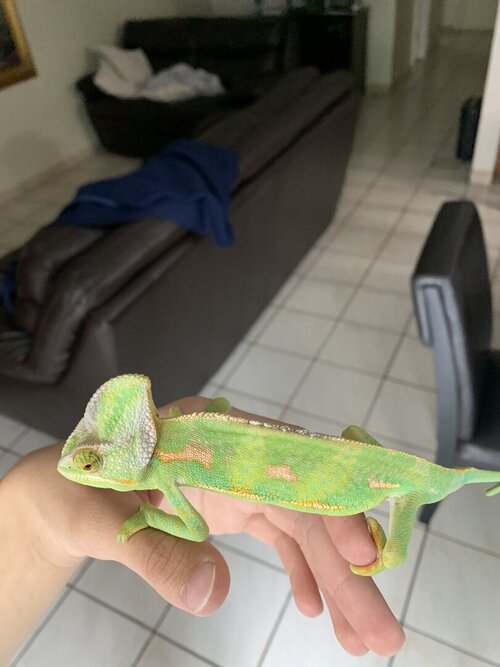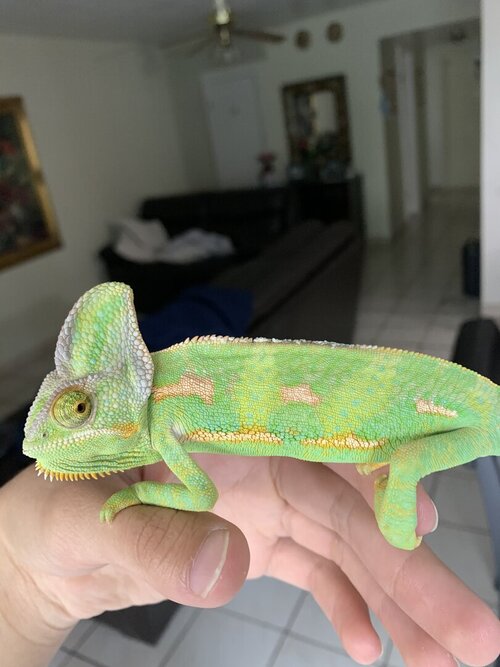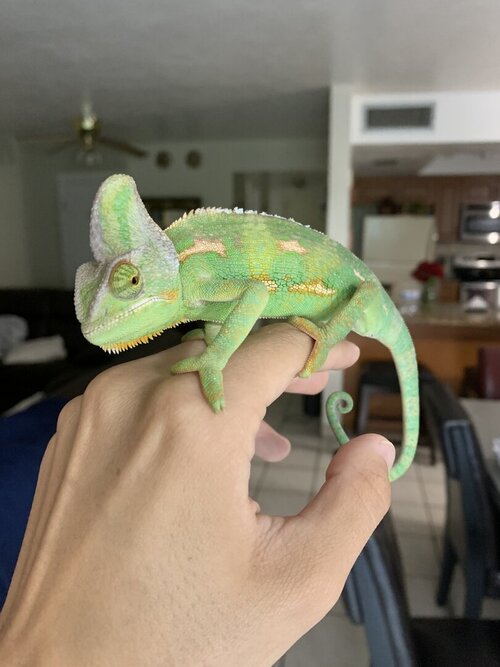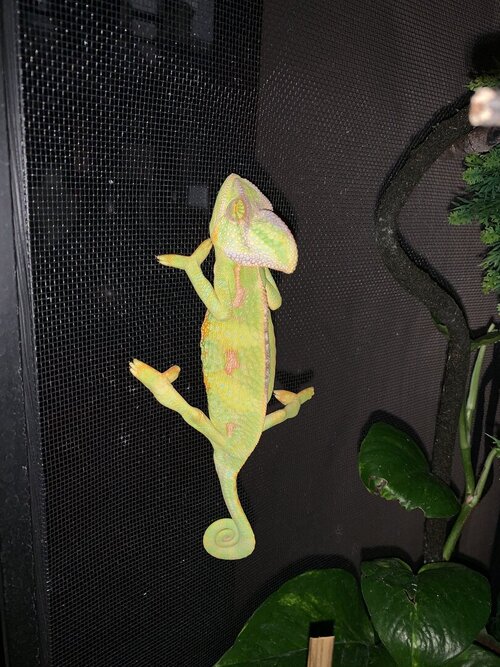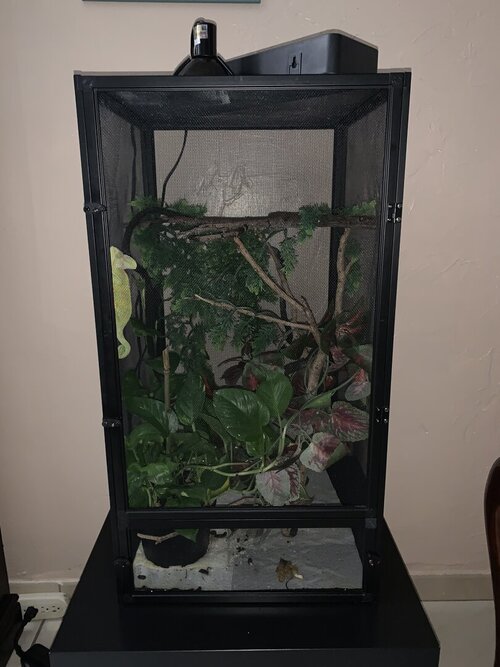hh566
New Member
Hello all!
I am posting regarding a couple concerns regarding my male veiled chameleon, Ripley. About a month ago, he had his first shed under my care. It seemed like it went pretty good until I noticed that his back never completely finished shedding. He just had loose pieces of shed skin on his back spikes. I thought that with time the skin would eventually fall off. However, about a week ago he went through another shed, and the same issue occurred. I don't know if this is something to worry about, or if it will cure itself over time, but I wanted to reach out because I don't know what to think about it. To try to help him, I would pull only the very loose skin with my wet finger but that could only do so much. The good is that it has never affected him and how we acts (appetite, willingness to come out, etc.) and that his shed around his toes always went well and never left any residue. Attached will be pictures of him earlier today.
Also, I wanted to know if by any chance I could get an age estimate of my boy.
Thank you guys for all the help and advice you have provided!
I am posting regarding a couple concerns regarding my male veiled chameleon, Ripley. About a month ago, he had his first shed under my care. It seemed like it went pretty good until I noticed that his back never completely finished shedding. He just had loose pieces of shed skin on his back spikes. I thought that with time the skin would eventually fall off. However, about a week ago he went through another shed, and the same issue occurred. I don't know if this is something to worry about, or if it will cure itself over time, but I wanted to reach out because I don't know what to think about it. To try to help him, I would pull only the very loose skin with my wet finger but that could only do so much. The good is that it has never affected him and how we acts (appetite, willingness to come out, etc.) and that his shed around his toes always went well and never left any residue. Attached will be pictures of him earlier today.
Also, I wanted to know if by any chance I could get an age estimate of my boy.
Thank you guys for all the help and advice you have provided!

